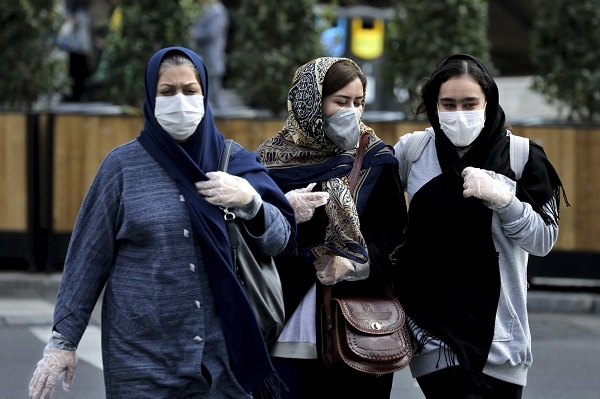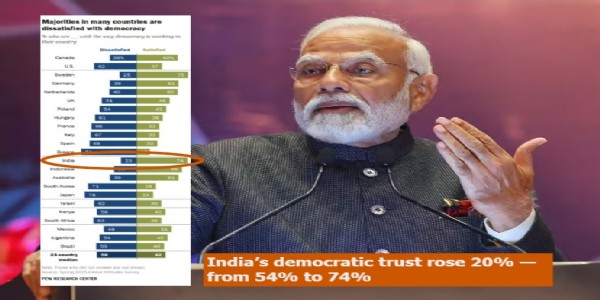Post Coronavirus 'new normal'- Restructuring the Global Economic Order- Part 4
Total Views | 48
Yemen and Libya, ravaged by war and internal strife have no capacity whatsoever to control the virus. Neither of these countries have governments that control their respective countries, to enable necessary steps to be undertaken to curb the infection. With massive scales of infection across the region and thousands succumbing to the pandemic; Covid-19 will showcase government failures, increase the already high levels of sectarianism, tensions between Islamists and secularists and deepen the economic chasm within states and between nations. MENA region will undergo a massive change during this pandemic.
UAE and Saudi Arabia reacted pre-emptively and have contributed to flattening the curve of infections in their countries. The United Arab Emirates, for instance, began implementing social distancing measures whilst the virus was still at its infancy. Saudi Arabia adopted an aggressive approach towards the virus, including a curfew from dusk to dawn, while also adopting other radical steps like preventing religious pilgrimage to two of Islam’s holiest places – Mecca and Medina.

Iran’s belated response and initial denials have transformed it into the epicenter of the Covid-19 pandemic in the Middle East with tens of thousands of infections. The first reported Covid-19 deaths in the MENA region occurred in the Iranian holy city of Qom. Despite this knowledge, Tehran decided to proceed with the 21 February 2020 parliamentary elections; resulting in the infestation of most of the provinces of Iran. The denial mode of the Iranian government and its refusal to impose a country-wide lockdown in February 2020 allowed the coronavirus to spread to Afghanistan, Bahrain, Kuwait, Lebanon and India.
Turkey, by early April 2020, had the highest acceleration of Covid-19 cases in the region, largely on account of its mismanaged health system. When the virus first appeared on Turkish soil, social mobility was not prevented and testing was confined to only those who had travelled abroad. Its densely populated cities are most vulnerable. Sixty percent of all Covid-19 cases were located in its commercial capital Istanbul, which accounts for 20 percent of Turkey’s total population. The pandemic also highlighted the failures of Turkey’s health system – from the lack of organization to the shortage of equipment, beds, and health workers.
Apart from the human costs, the impact would be felt most on the economic front as capital markets tumble, tourism industry grinds to a halt due to ban on flights and city lockdowns, and oil prices tumble. With the UAE having postponed its Expo 2020 by a year and Saudi Arabia not allowing the annual haj pilgrimage to take place, hundreds of millions of dollars were lost for both states. The UAE was expected to attract 25 million visitors to its Expo 2020 event which was to be held in October 2020, and Saudi Arabia received 20 million religious pilgrims each year. Egypt, meanwhile, is losing an estimated US$1 billion per month in lost tourist revenue.
It is perhaps in tumbling oil prices where the greatest economic impact will be felt. Oil is the core export for most Gulf Cooperation Council (GCC) states. Even before the pandemic, the price of a barrel of oil was on its way down, largely as a consequence of U.S. shale oil production and alternative renewable energy resources coming on line. The impact of the pandemic will further depress oil price as demand dries up. By March 2020, the price of a barrel of crude oil was US$31.35. Consider that in January of this year the price of the same barrel was an estimated US$60. While oil prices are expected to stage a moderate come-back and trade at US$40 per barrel by December 2020, this is far below the break-even point for the oil producers of the MENA region.
This is already having political consequences with most Arabic countries imposing taxes on their population to sustain the State. With the oil-income based free benefits to the citizens becoming a matter of the past, the already fragile polities across the GCC and its elite ruling families will have to adjust to an open and possibly democratic political processes.
The six countries of the Oceania region have 8,690 cases of Covid-19 infection, to date. Australia and New Zealand have a case-fatality rate of just over 1%, compared to 6% in USA and 13.5% in UK. Neither nation currently has community transmission of the coronavirus. Australia has 6,900 infected people with 97 dead; while New Zealand had 1,100 cases with 21 reported deaths to this virus and on 08 June New Zealand declared itself Corona free with no active cases of Covid-19. Australia’s treasury forecasts restrictions would cause unemployment to double to 10% and the economy to shrink 10% in the second quarter; while New Zealand's unemployment will increase to 11% and the GDP will be 8%-10% lower this year.

Australia has inherent advantages. If a country were to be designed to withstand a viral pandemic such as Covid-19, it would look very much like Australia: geographically distant, a large island nation with borders than can be locked down, inhabited by a comparatively small population that lives, mostly in low-density cities.
Australia is wealthy, with a highly developed public health system, and a government sufficiently solvent to be able to turn on the tap of public monies to get its population through the months of lockdown. Legislation for AU$130bn in wage subsidies for those who have lost jobs because of the pandemic was passed by parliament this week, on top of AU$84bn in economic stimulus promised earlier.
Amid fears of a global recession, New Zealand officials fear almost every sector to be seriously hit, certainly tourism, hospitality and aviation/transport. To off-set the negative impact of the pandemic, an elaborate economic response package of tax facilitation, wage subsidies and income support has been implemented. With food production and exports picking up pace, and commencement of construction and infrastructure works the drive for an economic bounce-back has started around the country.
The New Zealand government, which is scheduled hold elections in September, aims to save 140,000 jobs over the next two years and create 370,000 new ones by 2024, while reducing unemployment from an expected peak of 9.6% by June 2020 to the current 4.2% within two years. The government estimates that the budget deficit will be an average of 9.3% of GDP, equivalent to NZ$28 billion, until 2022, with deficit reduced to 1.3% of GDP, or NZ$4.9 billion by June 2024.
Earlier Parts-
Bharati Web







